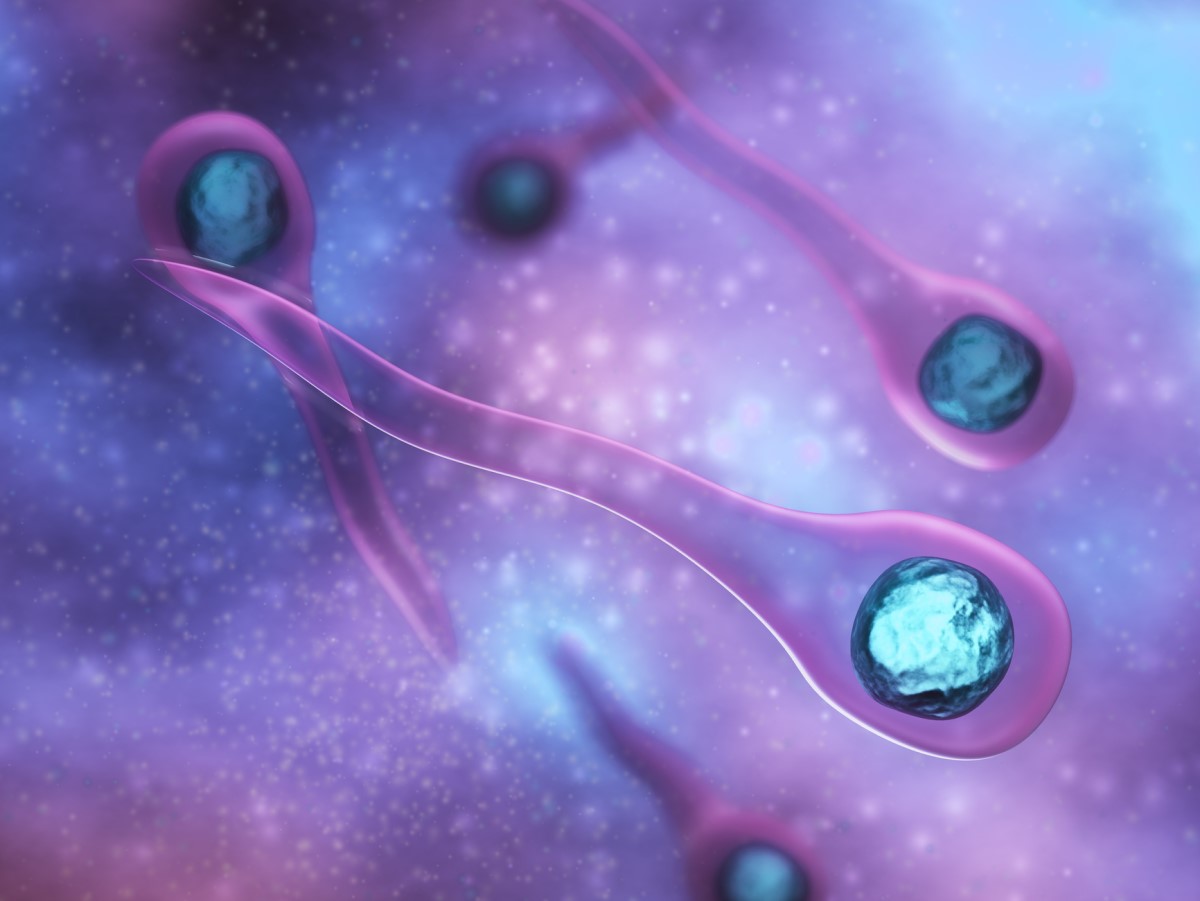- pubmed.ncbi.nlm.nih.gov - Current concepts in the treatment of Clostridium tetani infection
- pubmed.ncbi.nlm.nih.gov - Tetanus and Clostridium tetani - a brief overview
- pubmed.ncbi.nlm.nih.gov - Treatment and prevention of tetanus
- solen.cz - The present of tetanus vaccination, Dita Smíšková, M.D., Ph.D., Vilma Marešová, M.D., M.Sc., 1st Infectious Diseases Clinic, 2nd Faculty of Medicine, Charles University Hospital, Prague.
- solen.sk - Possibilities of post-exposure vaccination, Pavol Šimurka, M.D., PhD. from the Department of Paediatrics and Neonatology, University Hospital Trenčín.
Tetanus: What are the causes of infection and symptoms?

Tetanus is an infectious disease. It affects the nervous system. Vaccination helps marginalize this insidious disease, but...
Most common symptoms
Characteristics
Tetanus is an infectious disease that primarily affects the nervous system.
In the past, this insidious disease has topped the mortality list
, especially for newborns and infants.
Thanks to active immunisation, tetanus has been almost completely eradicated. However, in rare specific cases, in accidents and injuries, especially in the countryside, it can still occur in today's modern world.
Tetanus is a disease of the nervous system. It is caused by a toxin produced by a bacterium called Clostridium tetani.
It is one of the most common fatal infectious diseases in the world.
It is a significant cause of neonatal death in developing countries. Unhygienic births, unmedicated abortions, inadequate maternal immunization and inadequate deep wound care explain most cases of neonatal and adult tetanus in developing countries.
In addition, the climate and soil pH in the tropics may contribute to the increased prevalence of the causative agent of the disease, Clostridium tetani.
Natural immunity in unvaccinated communities is approximately 30% and increases with age. The incidence of infection and mortality after the neonatal period is higher in males than in females.
The main manifestations of intoxication are primarily neuromuscular dysfunction. It manifests as muscle spasms caused by the tetanic exotoxin, tetanospasmin.
Tetanus can manifest in one of four clinical forms:
- Generalized
- local
- cephalic
- neonatal
Causes
Clostridium tetani is a Gram-positive, anaerobic rod-shaped bacterium that has the ability to form so-called terminal spores. It is this ability to form spores that gives the bacterium its characteristic microscopic rod shape. It is also the reason for its extreme resistance.

The spores are resistant to heat and antiseptics. They have the ability to persist in tissues for months.
They survive for years in soil and can also be found in house dust, salt, fresh water, animal feces, even contaminated heroin.
The gateway for C. tetani is usually a skin injury caused by puncture wounds or scratches, deep punctures, burns and bruises.
In some cases, no clear-cut entry point of infection can be identified. In such cases, the source of infection may be the gastrointestinal tract, inflamed tonsils, ear injury or contaminated vaccine, serum or transfusion.
Approximately 50% of tetanus cases are related to an accident.
Approximately 20% of infected injuries are due to an unknown cause and in 5% the source of infection cannot be identified.
Once the spores enter the tissues, they turn into a living form of Clostridium tetani. They multiply and produce tetanospasmin. The toxin enters the peripheral nerves and passes through them to the central nervous system.
The second way the toxin spreads through the body is via lymphocytes.
Tetanospasmin acts on both the central and peripheral nervous system. It acts by dysregulating neurotransmitters in nerve connections, i.e. synapses.
The result is the absence of inhibitory impulses. This is manifested by characteristic convulsions, seizures and the predominance of the sympathetic component of the autonomic nervous system.
The patient remains fully conscious because the toxin does not affect mental state or consciousness.
Additional tetanospasmin activity has been detected in the neurocirculatory, neuroendocrine and autonomic nervous systems.
Once the toxin has bound to tissue, it cannot be dissociated or neutralised by tetanus antitoxin. The antitoxin can only prevent further binding of the still free circulating toxin in the CNS.

Symptoms
Tetanus can have up to 4 clinical forms. Based on how it manifests itself, its symptoms and course differ.
Generalised tetanus
Generalised tetanus is the most common clinical form of tetanus. It can occur after relatively minor injuries.
Patients with this form of tetanus experience tonic contraction of skeletal muscles and occasional intense muscle spasms.
The contractions and periodically recurring spasmodic muscle contractions form the typical clinical picture of the disease:
- opisthotonus (bending of the whole body backwards)
- stiff neck
- trismus (spasmodic contractions of the muscles of mastication)
- risus sardonicus (spasmodic contraction of the cheek muscles as if into a smile)
- plate-like abdominal stiffness
- periods of breathlessness (apnoea) caused by strong contraction of the chest and vocal cords or pharyngeal muscles
- inability to swallow (dysphagia)
The onset of these symptoms can be rapid and insidious.
Typical initial manifestations are painful spasms, trismus, difficulty swallowing, unilateral or bilateral stiffness of the neck and other muscle groups such as the chest or abdomen, which occur in approximately 50% of cases.
As the disease progresses, other muscle groups become affected. One of the most serious symptoms is the occurrence of paraspinal muscle spasms (muscles around the spine). Spasms lead to severe opisthotonos, or bow-shaped bending of the body.
In young children, the spasms are so severe that the feet may touch the head. Vertebral fractures are also common in this situation.
Tetanic spasms continue for several days, adding more and more muscle groups. The patient's condition deteriorates significantly. In addition to vertebral fractures, other bones are also fractured, including bleeding into the muscles.
Even minor stimuli, including light, draughts, sounds (e.g. voices) and light touch, can trigger and aggravate spasms. These spasms are very painful. They can affect all the muscles we control by will, as well as muscles we engage automatically, such as the muscles of the larynx.
This is when the disease becomes truly fatal.
Symptoms of autonomic nervous system overactivity are manifested in the early stages as irritability, restlessness, sweating and tachycardia.
In the later stages of the disease, excessive sweating, cardiac arrhythmias, fluctuating hypertension or hypotension and fever occur. Particularly dangerous are episodes of slow heart rate (bradycardia) and low blood pressure (hypotension). Their combination can lead to cardiac arrest.
Patients with cardiovascular complications must be admitted to an intensive care unit bed where respiratory support with artificial lung ventilation and therapeutic paralysis are available.
Convulsions and cardiovascular complications most commonly occur during the first week of illness and slowly resolve over the following 2-4 weeks.
Localised tetanus
Localised tetanus is a relatively rare manifestation of tetanus. It occurs when circulating antitoxin prevents the spread of the toxin throughout the body but is not sufficient to stop local absorption of the toxin at the wound site.
The result is prolonged, persistent and painful muscle contraction at the wound site. It can last up to several weeks.
Kephalic tetanus
Kephalic tetanus is also a rare manifestation of tetanus.
It arises from head and neck injuries and therefore affects only the cranial nerves. Any of the cranial nerves may be affected, either alone or in combination. The most common nerve involved is the VIIth cranial nerve, the nervus facialis, which innervates the facial muscles.
Patients suffer from dysphagia, trismus and local cranial neuropathies.
Kephalic tetanus may precede the generalized form or occur only in isolation.
Neonatal tetanus
Neonatal tetanus often occurs in children who were born naturally (vaginally) to mothers who were not immunized.
Inadequate maternal immunisation and inappropriate birth practices are responsible for the high incidence of this disease in developing countries.
Some ethnic groups practise non-aseptic wound and umbilical cord care practices. They often leave the umbilical cord to dry and die or apply mud, butter, faeces, etc. to the umbilical cord.
This form of tetanus usually appears in infants within 14 days of birth. It presents with convulsions, trismus, rigidity, opisthotonus and seizures.
Mortality is high.
Infants most commonly die from associated complications such as CNS haemorrhage, pneumonia, pulmonary haemorrhage and laryngeal spasms with inability to breathe and choking.
Diagnostics
Tetanus is most often diagnosed on the basis of a typical clinical picture.
The spatula test is a simple test that can be used as a diagnostic test. In this test, a spatula is inserted into the mouth so that the back edge of the spatula touches the wall of the larynx. If tetanus is present, this touch of the spatula causes a reflex contraction of the masticatory muscles, specifically the masseter muscles.
The specific diagnosis of tetanus by laboratory tests is difficult. At present, there is no test available to confirm or exclude the diagnosis unequivocally. Only tests that exclude other types of intoxication are used.
Blood counts are mostly normal, cerebrospinal fluid parameters are normal, and the electroencephalogram and electromyogram are physiological or only mildly and non-specifically abnormal.
Microscopic findings may show characteristic Gram-positive bacilli with terminal spores. Such positive microscopic findings occur in one third of patients.
Assessment of the severity of the disease is important. Early recognition of the warning signs of a severe course may help in the correct timing of the need to secure the airway.
The first step is to determine the length of the incubation period (from injury to the first occurrence of convulsions), which is inversely related to the severity of the disease.
Tetanus acquired by infection from the uterus, umbilical cord, head and neck has a worse prognosis. High mortality is also associated with transmission of infection by intramuscular injection and heroin injection.
Differential diagnosis involves excluding these diagnoses:
- parapharyngeal, peritonsillar abscesses and dental infections, which may present only with trismus and dysphagia
- poliomyelitis and other forms of viral encephalomyelitis which cause a change in consciousness (tetanus does not cause a change in consciousness)
- meningoencephalitis (including rabies) and meningitis, which may cause a stiff neck but also a change in consciousness
- Bell's palsy, which affects only the VIIth cranial nerve
- hypokalaemic tetany, diagnosed by low serum calcium levels
- strychnine poisoning (rat poison) diagnosed by toxicological tests of serum, urine and tissues
- malignant neuroleptic syndrome in which patients have an altered mental status
- sepsis
- seizures in other diseases
Course
The course of the disease is influenced by the age and comorbidity of the patient.
The incubation period is usually 3-14 days after the injury.
In up to a third of patients we cannot demonstrate any recent injury. For example, the injury may be too trivial or the infection is unusual, e.g. a rare infection of the skin, teeth, ears, abortion or an infected intramuscular injection.
The complete course of tetanus usually takes 14 to 28 days.
The duration and course of tetanus are determined by the site and amount of toxin bound. The severity of clinical signs may vary and depends primarily on the amount of toxin that enters the CNS.
Symptoms progress and develop up to 14 days after the onset of the first symptoms. The severity of these symptoms is related to the incubation period and the time between the first symptom and the onset of convulsions. The longer the interval, the milder the clinical course of the disease.
In addition, the disease may have a milder course in individuals with pre-existing tetanus antibody levels.
Forecast
The worldwide mortality rate for generalised tetanus is between 45 and 55%. Approximately 1% of patients die from a localised form of tetanus and more than 60% of infants die from neonatal infection.
A poor prognosis of the disease is expected in patients in whom the interval between injury and trismus is less than 7 days or in whom progression of trismus occurs in less than 3 days.
No neurological permanent sequelae are noted after successful cure of tetanus. However, patients report residual muscle stiffness during recovery, which lasts several months.
Prevention
Effective prevention of tetanus in wounds and burns involves 3 basic rules:
- Critical assessment of wound contamination, especially when soil contamination with animal excreta is suspected.
- careful wound cleaning and other aseptic wound care
- active and passive immunisation of the wounded person against tetanus before wounding

How it is treated: Tetanus
Treatment of tetanus: Drugs, antibiotics and other specialist care
Show moreWhat are the causes and manifestations of tetanus (video)
Tetanus is treated by
Interesting resources
Related










